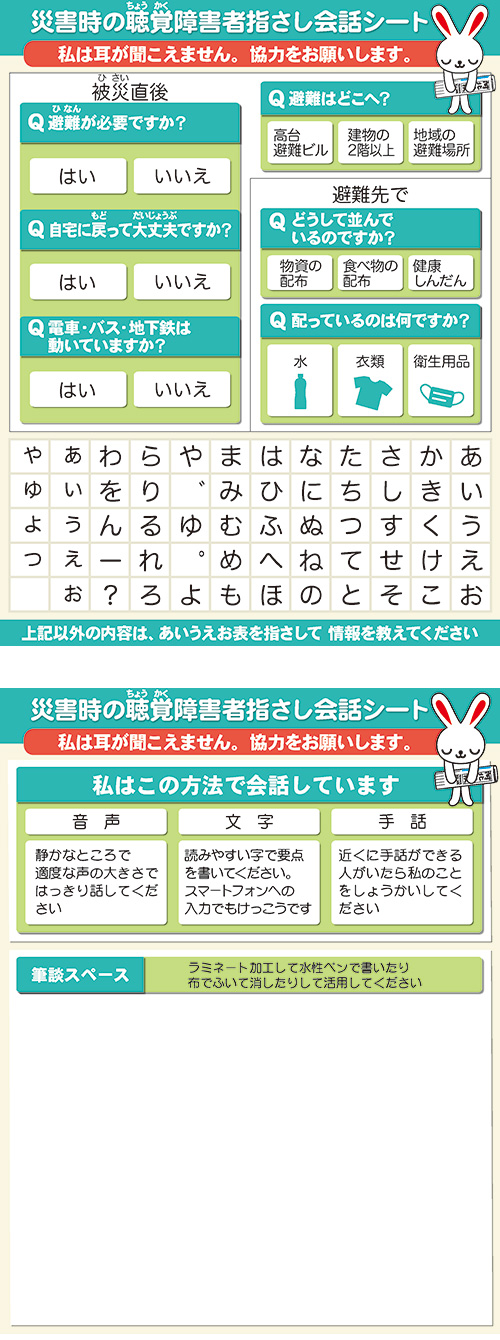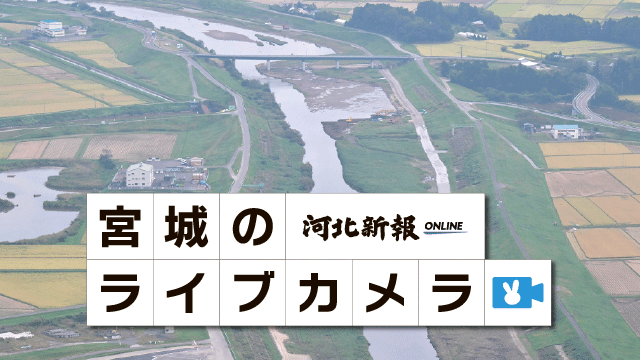Part 9: Preparations in the Workplace (2) Companies / Group Evacuation Motivates Residents to Move



The decisions of corporations to evacuate saved not only the lives of their employees, but also the lives of local residents.
The headquarters of “Amatake,” a poultry processing and sales company in Ofunato City, is located about two kilometers from the sea. Roughly 400 meters to the east flows the Sakari River. When the Great East Japan Earthquake occurred, there were around 400 employees in the company building.
The disaster prevention training had been limited to fire drills. After the tremors, all workers lined up on the grounds of the headquarters, just as they had been trained.
Past 3 p.m., executive director Morihiro Murakami (54), then managing director, heard a report on the emergency radio that the expected height of the tsunami was three meters. "Then it won't come this far," he thought. 10 minutes later, an employee who had been watching the 1-seg broadcast on his car navigation system informed him that a tsunami of nearly 10 meters was advancing towards the coast.
10 meters. The figure sent chills running down his spine. He promptly decided to evacuate, and instructed everyone to move to the Ofunato Civic Cultural Hall, which was on high ground roughly 600 meters away.
Around 30 people crowded around Murakami, saying that they wanted to go back for their wallets or cell phones. It was a race against time. "No! Your lives are more important, so we're going to escape while we can. Do as I say!" he roared. Still in their white coats, the employees began to move in order, starting with the female part-time employees.
At around 3:20 p.m., Takeshi Sato (48), chief of the manufacturing department, began to evacuate with the last group. As they left the grounds, a great boom echoed across the area, and Sato reflexively turned around.
A large amount of white smoke was rising from the direction of the cement factory facing Ofunato Bay. It hit him: "The tsunami is here." Not long after, a cloud of dust rose downstream from the irrigation canal. All at once, he and the employees around him started running. Murakami put six Chinese trainees who became unable to move or started hyperventilating in two cars, and left the office behind. However, they were met with traffic congestion. Concerned that the tsunami would obstruct their path once it flowed up the Sakari River, Murakami abandoned the cars and headed for the municipal office, which was further inland.
The sight of the Amatake employees evacuating en masse was a shock to the people in the area. Fusako Mino (71), who worked at a nearby automobile maintenance plant, was cleaning up the office alone after the main shock. She knew about the major tsunami warning, but she had underestimated it, thinking things would be fine. The neighborhood had not flooded, even in the Great Chilean Earthquake Tsunami of 1960.
She heard shouting, and looked outside. A group of people in white coats were moving by as they called out to each other. She was suddenly filled with anxiety. When her husband (77) returned from the hospital, they got in his car and fled to the municipal office. Immediately after that, her office flooded two meters.
Many residents living along the route taken by the Amatake employees sensed the danger and evacuated. Local residents explained: "They were very noticeable, shouting as they escaped." "They had come from direction of the sea, so I understood it was dangerous."
The action of the employees had unexpectedly become "proactive evacuation" that induced those around them to follow suit. In the end, most people, including the employees who had escaped the tsunami by a hair, gathered at Sakari Elementary School, 350 meters west of the municipal office. The first floor of the Amatake headquarters was completely flooded, but everyone at Sakari Elementary was safe.
◎Strengthening safety measures / Increasing awareness in business continuity
After evacuating to Sakari Elementary, Morihiro Murakami (54), then managing director of poultry processing and sales company “Amatake,” kept worrying about a certain female employee in her 30s.
When they were about to evacuate, she had entreated him to let her leave: "I have a child alone at home, so I want you to let me go home!" Her house was close to the sea. Murakami wavered, but the mother's worry for her child was painfully clear. Calling after her to be careful, he let her go home in her car.
"I wonder, was it the right decision to allow her to go home?" Not knowing whether she was safe, he kept asking himself that question, imagining the worst. When he learned a few days later that both mother and child were safe, he felt relieved from the bottom of his heart.
The headquarters had zero victims, but at two Amatake factories in Rikuzentakata City, 10 employees, who went home after the earthquake out of concern for their families, lost their lives in the tsunami. One of the factories was on high ground, and had they stayed put they would have been safe.
On May 13, two months after the earthquake, Amatake hatched the eggs for their "Nanbu Chicken" brand. The employees came together as a group to tackle the cleanup and restoration work, and on July 1 they restarted operations at their factory.
At the same time, Amatake thoroughly reexamined its disaster prevention measures as part of the evaluation of its Business Continuity Plan (BCP), formulated to maintain business activities after disasters.
They settled on a policy to avoid sending employees home, in the event that a tsunami is expected. Based on the fact that their building was not flooded past the second floor, even in this earthquake, they made evacuation to the upper floors the general rule for urgent circumstances. They also created a reserve with several days' worth of food and water, and prepared blankets and a generator as well.
They had their employees convey to their families that they would be unable to go home during emergencies. Amatake would secure the safety of its employees at the company headquarters, and have their families focus on protecting themselves. Doing so would lead to a reduction in the number of victims in the region.
On the off-chance that something might happen, they also moved their Tokyo headquarters inland, originally located along the coast of Tokyo. Murakami, now executive director, declares, "We must take the 10 lives we lost very seriously. Our employees were the driving force behind our early re-opening, and next time we will not fail to protect them."
The earthquake made companies along the coast question whether their tsunami preparations had been sufficient. Because it occurred during the day on a weekday, many businesses were open and operating, and a great many employees and customers were exposed to danger.
Since the earthquake, awareness of BCP has been on the rise in the Tohoku area. Professor Susumu Nakano of the Research Center for Management of Disaster and Environment, Tokushima University (Regional Disaster Prevention), studied the initial responses of businesses affected by the quake. He points out, "Securing the safety of employees and customers is the underlying premise of BCP. If the company does not protect the employees, who are resources for the business, there is no chance of ‘continuity’ beyond."
Translated by Kenneth Gray
November 29, 2013 (Fri.)
[Japanese] http://www.kahoku.co.jp/special/spe1114/20131129_01.html
みやぎ地域安全情報
宮城県警 みやぎセキュリティメールより
- 女性に対する不審者事案の発生【山元町】
- 特殊詐欺の予兆電話について(黒川郡大和町)
- 女性に対する盗撮事案の発生【青葉区】
- 女性に対するつきまとい事案の発生【大崎市】
- 特殊詐欺の予兆電話について(気仙沼市)
- オレオレ詐欺の特殊詐欺注意報(仙台市泉区)
- 刃物ようのものを持った男の目撃情報について(大崎市)
- オレオレ詐欺の特殊詐欺注意報(仙台市宮城野区)
- 特殊詐欺の予兆電話について(松島町)
- オレオレ詐欺の特殊詐欺注意報(仙台市太白区)
- オレオレ詐欺の特殊詐欺注意報(石巻市)
- 特殊詐欺の予兆電話について(蔵王町)
- 不審電話について(黒川郡大衡村)
- オレオレ詐欺の特殊詐欺注意報(登米市)
- オレオレ詐欺の特殊詐欺注意報(石巻市)
- 特殊詐欺の予兆電話について(仙台市泉区)
- 特殊詐欺の予兆電話について(加美郡加美町)
- オレオレ詐欺の特殊詐欺注意報(仙台市宮城野区)
- 特殊詐欺の予兆電話について(大崎市)
- オレオレ詐欺の特殊詐欺注意報(亘理郡亘理町)
- 女性に対するつきまとい事案の発生【大和町】
- 特殊詐欺の予兆電話について(仙台市泉区)
 朝刊・夕刊
朝刊・夕刊 記事を探す
記事を探す FAQ
FAQ







